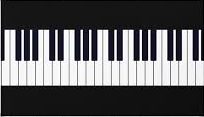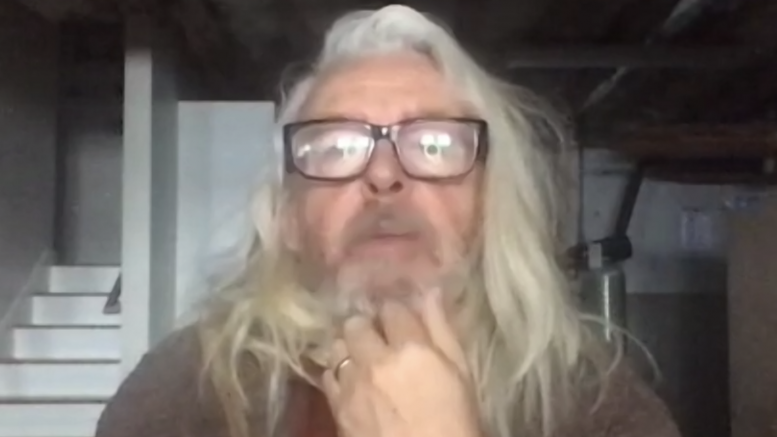Tears for Fears’ Roland Orzabal and Curt Smith talk about the three-day stint at Massey Hall in 1985 when they filmed the video for “Head Over Heels” at Emmanuel College Library.
Nick Krewen
Special to the Star
February 11, 2022
Remember when Tears for Fears ruled the world?
Band co-founders Roland Orzabal and Curt Smith, both 60, who have sold over 30 million albums around the world, recall the time fondly.
They were in Toronto in the middle of a three-day Massey Hall stint from May 30 – June 1, 1985, when “Everybody Wants To Rule The World” had continued the British duo’s chart-topping streak that began with the anthem “Shout” and had propelled their sophomore album Songs From The Big Chair to massive sales, including over 700,000 copies here in Canada.
“It was a joyful time really, because we were playing all these nights at Massey Hall,” Orzabal remembers. “We had fans who booked rooms in the hotel and every night we would go down to the bar and it would be full of fans. And there wouldn’t be any hysteria: you would just be chatting away with them, and the weather was incredible. The love we felt for Canada at the time knew no bounds.”
Smith recalls that while their nights were filled with sellout concerts, which they were lensing for posterity, their days were also spent at Massey and Emmanuel College Library in Toronto filming the “Head Over Heels” music video.
“Our days were jam-packed — not only trying to finish the video, but we had a No. 1 song in America, and we had to go and redo bits of the filming of the Massey Hall shows because of the lights and camera angles — we couldn’t get it all covered during the actual performances, so we were redoing bits of that too during the day at the venue.
“So yeah, it was an interesting few days.”
Admittedly, a lot of water has passed under the bridge since then: the reason for this conversation is to promote The Tipping Point, Tears for Fears’ first album in 17 years, released Feb. 25, and discuss the journey leading up to it.
It’s been an interesting musical metamorphosis: bursting on the scene with the 1983 opus The Hurting, a synth-rock masterpiece that captured the angst of the new wave era and gave us the classics “Mad World,” “Pale Shelter” and “The Hurting.”
Songs From The Big Chair, the Bath, England natives’ 1985 follow-up eventually led to a more organic sound with 1989’s more soulful The Seeds Of Love, introducing singer Oleta Adams to the mainstream as the album examined the role and perception of women in songs like the Beatles-inspired “Sowing The Seeds of Love,” “Woman in Chains” and “Advice to the Young of Heart.”
That followed an acrimonious split between Orzabal and Smith that resulted in the former issuing 1993’s Elemental and 1995’s Raoul and the Kings Of Spain as de facto solo projects. Smith formed his own band, Mayfield, and guest-starred on a few episodes of the TV series Psych before the duo reunited for 2004’s Everybody Loves A Happy Ending.
As more time passed, the band occasionally took their act on the road — including a co-headlining tour with Daryl Hall and John Oates — and were happy with the results, as younger acts began to cover their songs: Gary Jules’ hit version “Mad World” is perhaps the most mainstream example, with The Weeknd (he sampled “Pale Shelter” on “Secrets”), Drake (he sampled “Ideas as Opiates” for 2009’s “Lust For Life”), Nas, Kanye West, Hot Chip and others following suit.
After Orzabal recovered from a tragedy — he lost his wife in 2017, they decided the time was right for a new album.
“The initial premise was — from a live perspective, we had gotten to the point where the band was incredibly good and the live set was fantastic — but we always look for room for improvement,” said Smith. “And the only way we were going to improve on it was to produce some new material, as we had a finite amount of material and we just didn’t want to introduce cover songs or songs from our catalogue that we didn’t think would have worked as well live.
“Then, our management company and record company got involved and really thought we should be writing with modern songwriters and producers to try to drag us kicking and screaming into the 21st century.”
Smith doesn’t name all the writers he and Orzabal paired up with, but allows that “it was a long period of time that ended up actually not working out.”
“But it did lead us to where we ended up,” he said.
Orzabal said from his perspective, he felt the time was right for the stars to align.
“There are times where the market and the zeitgeist works against you, and that’s fine,” Orzabal said. “We went away for a long time and we became more popular in the process. But we found ourselves, especially at the beginning of 2020, which is pre-pandemic, being able to … interface with the cultural problems we were all suffering with. And so, it’s timing, you know?
“I’ve said this before, but my life and Curt’s life … our fates are intertwined. Sometimes they’re not; sometimes we have long periods where it’s not important for us to be together. But some little birdie — some voice in the back of my brain — told me this was a very important time for us to step up to the plate.”
The 10 songs on The Tipping Point are another step forward in terms of musical evolution, perhaps smoother in terms of its pop delivery than any previous Tears for Fears effort. While there isn’t a drop of saccharine in the mix, there are some nods to the past.
“’The Tipping Point’ is definitely a reflection of where we are today,” Smith explained.
“But musically, I think — it mines our history. Even if you look at ‘No Small Thing,’ which goes from what’s effectively acoustic — could be Paul Simon-esque, could be Johnny Cash — ending up in this sort of bombastic Led Zeppelin drums kind of ‘Sgt. Pepper’s’ everything-thrown-at-the-wall kind of recording, so in that sense, we’re basically mining a lot of our influences.
“The biggest of all is probably our love of the album format and the fact that it was our intention to make an album, not a collection of songs, but a journey — and that’s where we got to this point.”
Orzabal’s take on The Tipping Point is that it’s a plateau; an arrival.
“We are no longer struggling to prove ourselves. We’ve seemed to work it all out, finally.”
Orzabal even draws parallels between The Tipping Point and The Hurting.
“We started off with The Hurting, which was a very emotionally honest record inspired by Arthur Janov, primal scream and primal theory and all relating very much to the vulnerability of childhood traumas, of childhood and difficult upbringings that we experienced,” he explains.
“We were very evangelical about it. We wanted to change the world. But it was also very convenient because it allowed us to blame our parents for everything.
“Of course, now, we are parents ourselves, so we take blame, we take responsibility. But we are fully aware that no matter how old you are, traumatic things can happen. So, then, how do we process that?
“And that’s pretty much what The Tipping Point is about: It does draw parallels with The Hurting, but we’re not struggling with adolescence: we’re struggling with life. And you can’t erase the bad things that happen to you. So, what sense can you make of that?
Smith adds that Tears For Fears songs “help us process emotions.”
“Outside of music, those emotions are on a hellish eternal loop in your head,” he says. “And this is our way of working it out. What people take from that is really up to them, but we can only hope that people get the same sense of relief and release that we get from it and come to the conclusion that everything is kind of going to be okay.”

